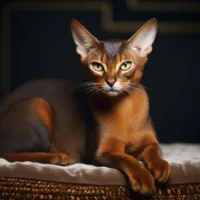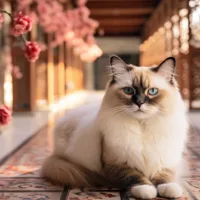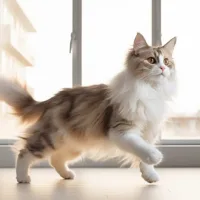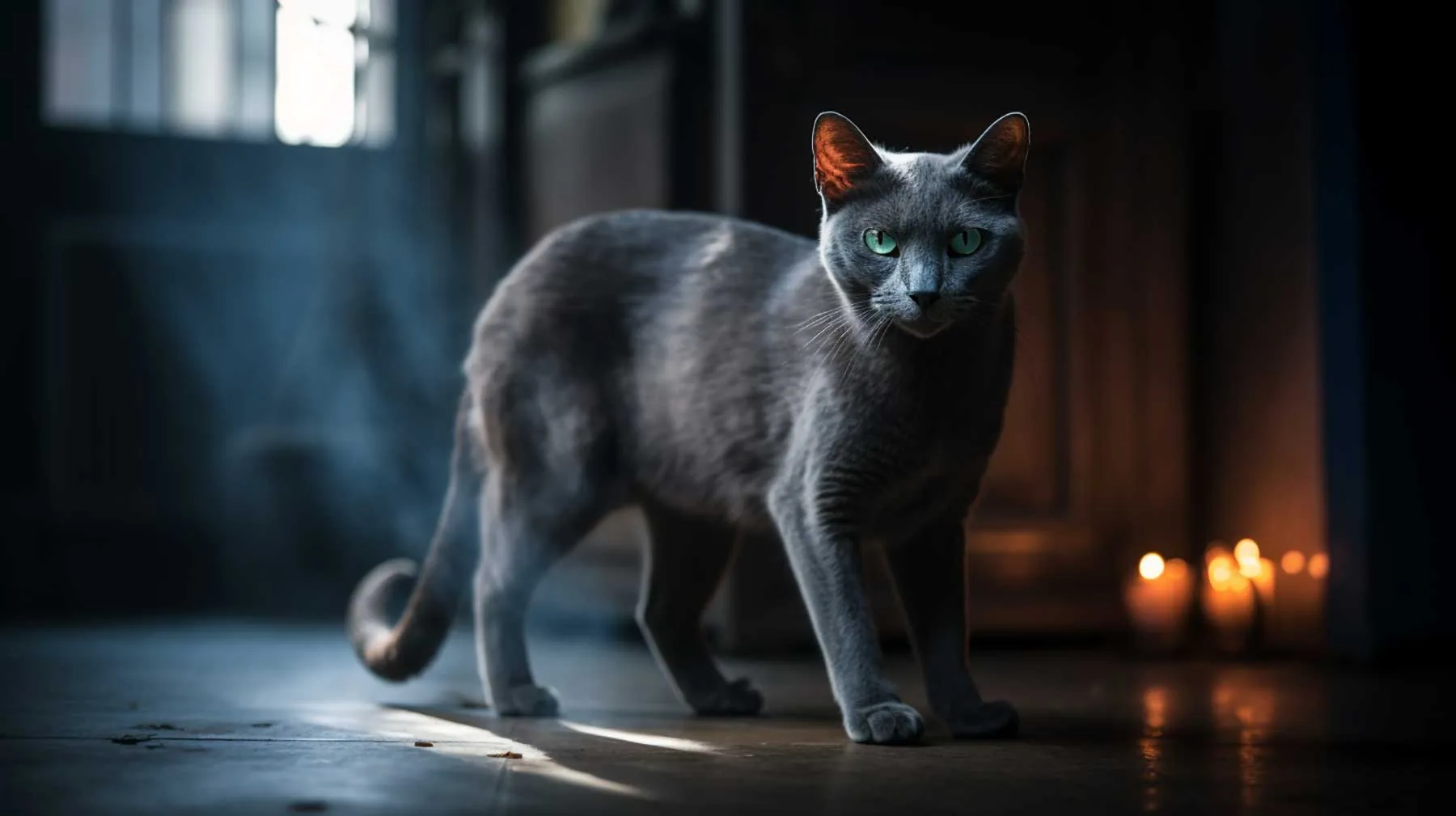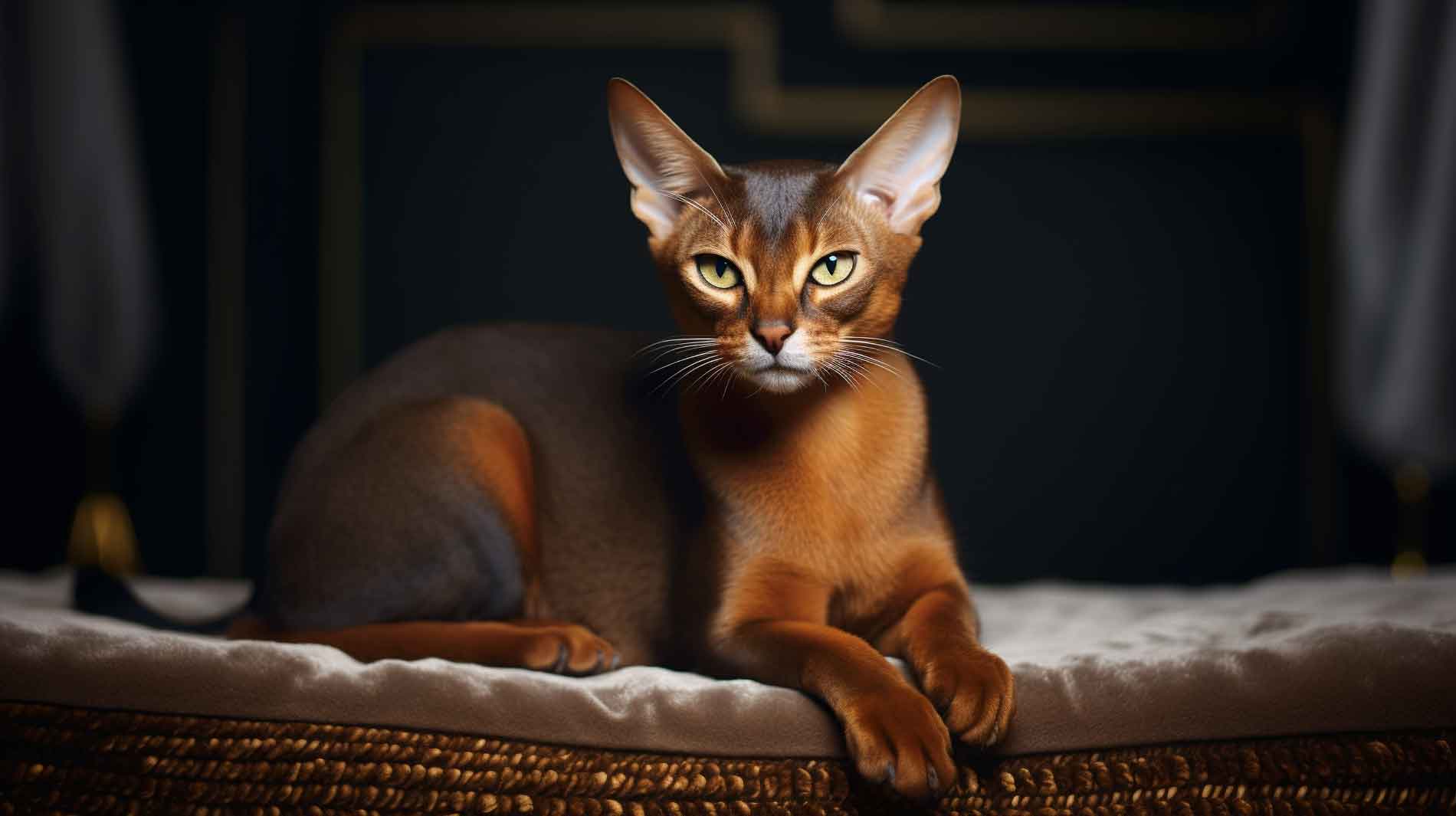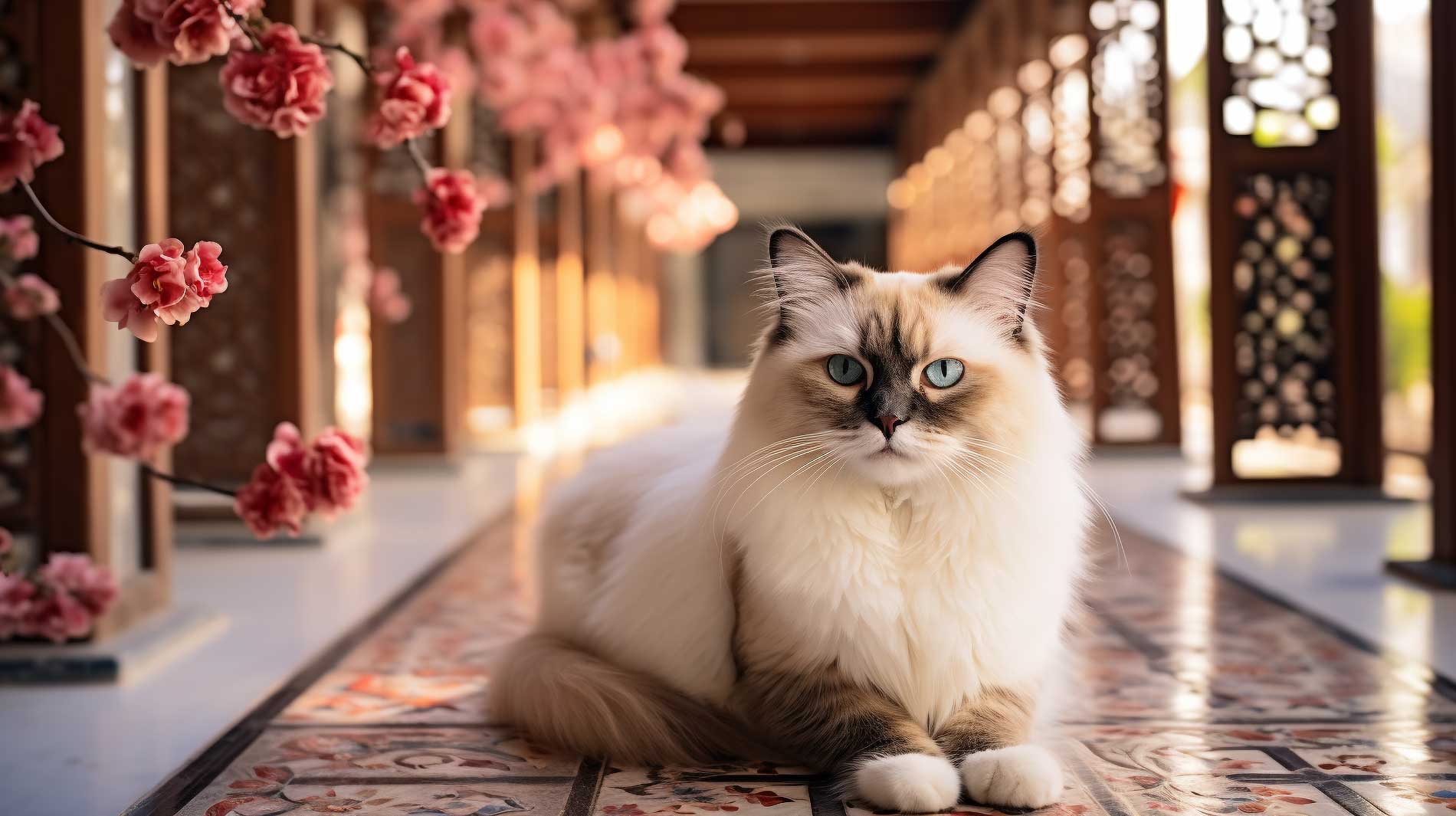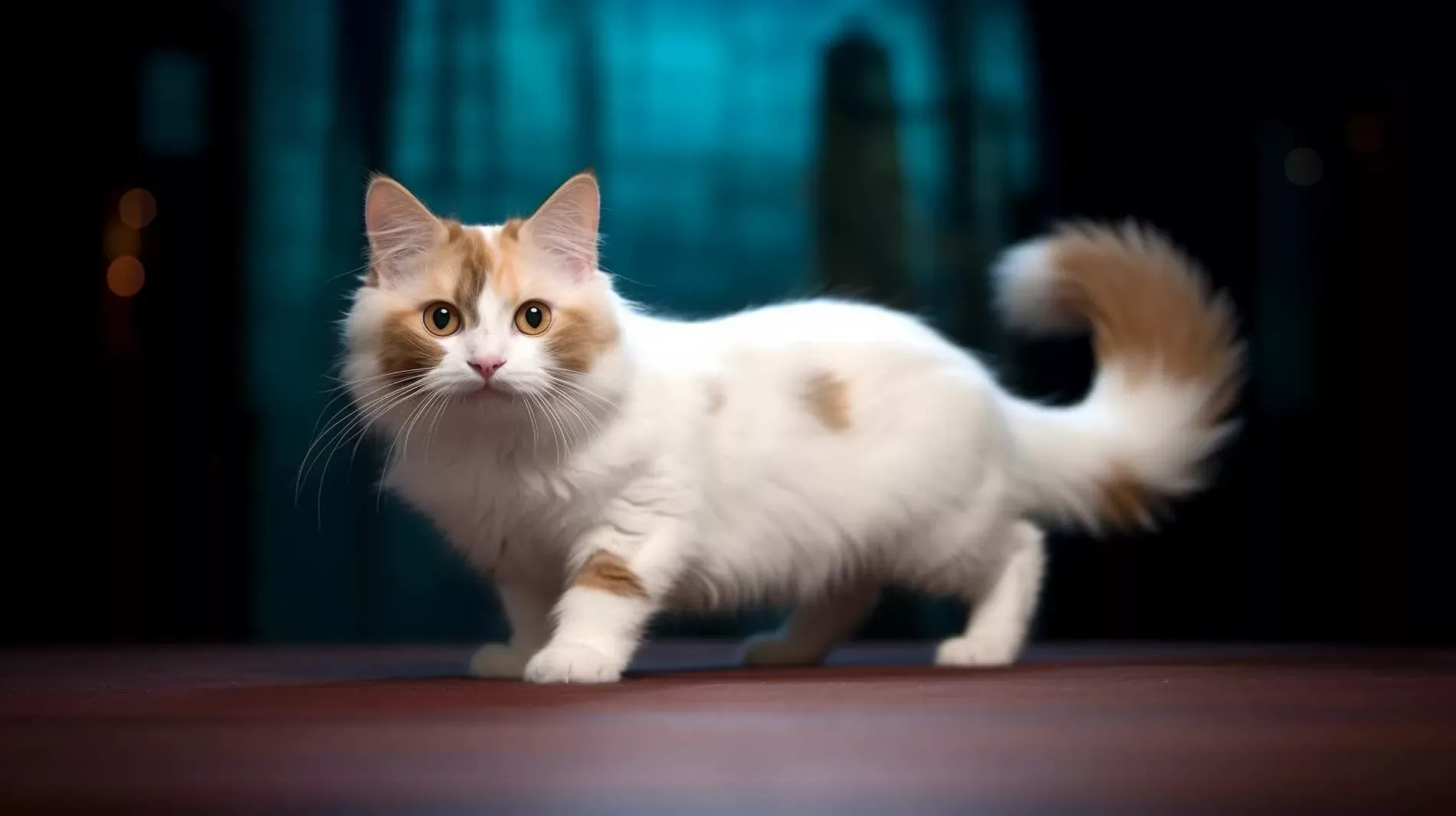Russian Blue look and fur – what makes her unique
The contrast between the Russian Blue’s uniform, soft coat, and its emerald green eyes is probably the most striking feature of this cat breed. Browsing the web, you will often find wrong pictures which in reality represent British Shorthairs (formerly British Blue), Korat cats (Thailand), or Chartreux cats (France) instead of the Russian Blue. Those breeds are quite different from the Russian Blue. Although the Korat and Chartreux have the silver sheen in common with it. Especially the eyes are important to make out a difference. Russian Blue always has emerald green eyes.
Immediately after birth, Russian Blue’s eyes are dark and blue.
Their color changes to green at about one month of age. Within the color change, the eyes appear greyish. Here and there it is said that Russian Blue kittens have yellow eyes. But according to our current research we cannot confirm this. Not one of the renowned breeders whose galleries we visited had kittens with yellow eyes. Various internet portals, and even high-ranking websites claim that Russian Blue kittens have yellow eyes. Do not be misled by this, pedigree adult Russian Blue cats have green eyes only.
The Russian Blue’s head shape is triangular, while the Korat cat’s head is heart-shaped and the Chartreux’ is trapezoidal. Russian Blue cats must also have lavender pink paw pads and slate grey noses. Their ears sit relatively far out on the head and are very narrow and pointed at the top, but quite wide at the bottom. A Russion Blue profile shows a straight, long nose. Their muzzle is particularly round and the corners of their mouth point upwards, giving them a gentle smile.
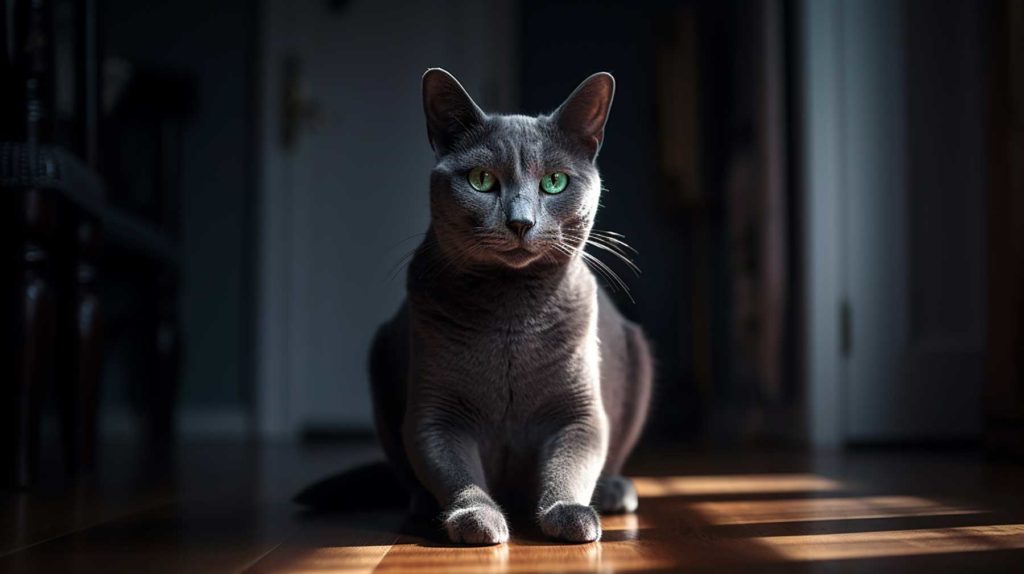
Russian Blue cats look exceptionally elegant, which is due to their slender body with long, well-proportioned legs.
The relatively long tail tapers towards the end. According to the cat magazine of Felis Danica (member of the Fédération Internationale Féline, FIFe for short), there are four types of Russian Blue: English, Continental, Scandinavian, and American. The most striking appearance is probably inherent in the American type. It has large round eyes on a particularly triangular head. Also a paler version of the blue coat, delicate bone structure, and ears set lower on the sides of the head. There seems to be an ongoing discussion about what position the ears should have and whether the standard should get adapted or not.1
The “blue” (grey) color exists due to the special quality of the individual hairs, which appear as if dipped in silver. When viewed under a microscope, you can also see that in blue cats the pigment granules in the individual hairs are clumped and unevenly distributed, resulting in the bluish-gray color. From a genetic perspective, their color is really just diluted black! Therefore, the recessive gene responsible for this is also called the dilute gene. So, if the pigments were evenly distributed, Russian Blue cats would be black. Some cats of this breed are born with “ghost markings”, tabby markings, stripes, or shading which disappear with age (often visible on the tail). Such markings are considered faults in the breed standard.
To keep your Russian Blue happy and healthy, brushing her once a week is sufficient. Apart from shedding season, she doesn’t loose much fur. You can use this opportunity to take a closer look at her and help distribute her natural oils. Take a closer look at her ears, claws, and teeth when you are doing that.
Russian Blue health – risks you might not know about
Russian Blue cats have the reputation of being robust and very low-profile as far as diseases are concerned. Nevertheless, we have found some data indicating that some of the usual suspects of genetic diseases are also evident here. This includes kidney stones and polycystic kidney disease (PKD) as well as Progressive Retinal Atrophy (PRA), Hypertrophic Cardiomyopathy (HCM), and FLUTD. In two 2015 studies, Russian Blue appeared in the risk groups for diabetes and skin tumors. Although nothing like this was previously known.
PKD leads to an enlargement of the kidneys, with them ceasing to function over time. In old cats, this can lead to kidney failure. Responsible breeders have their animals tested for the responsible gene early, so that affected cats can be excluded from breeding. If you see a kitten from your breeder that makes your heart beat faster, ask directly for proof that the parents are free of cysts. This can be ensured with an ultrasound examination.
PRA is a genetic, progressive disease of cats that unfortunately leads to blindness over time.
It usually appears at the age of 1.5 to 2 years. Cats with PRA should be excluded from breeding so that they do not pass on the corresponding genes.
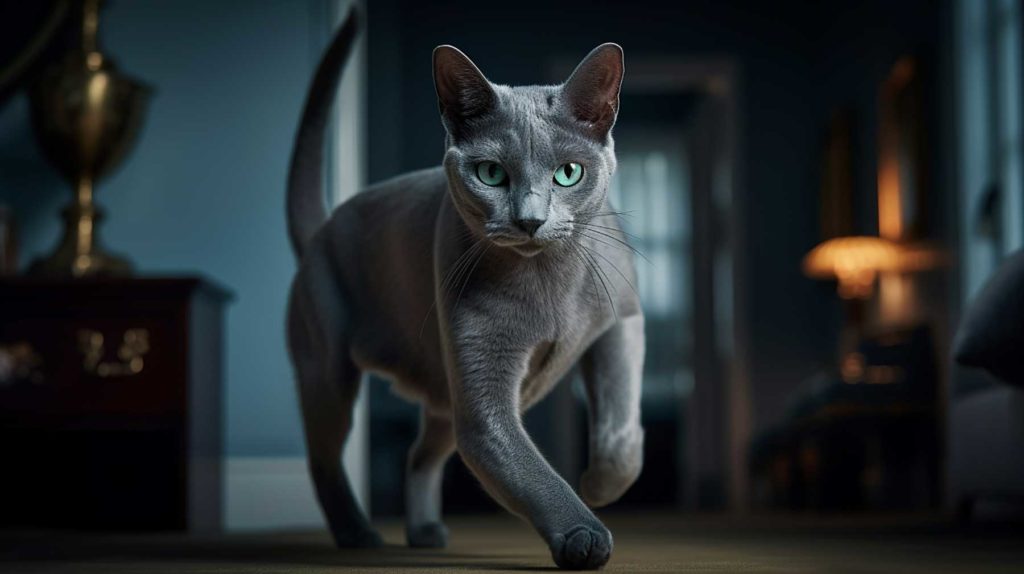
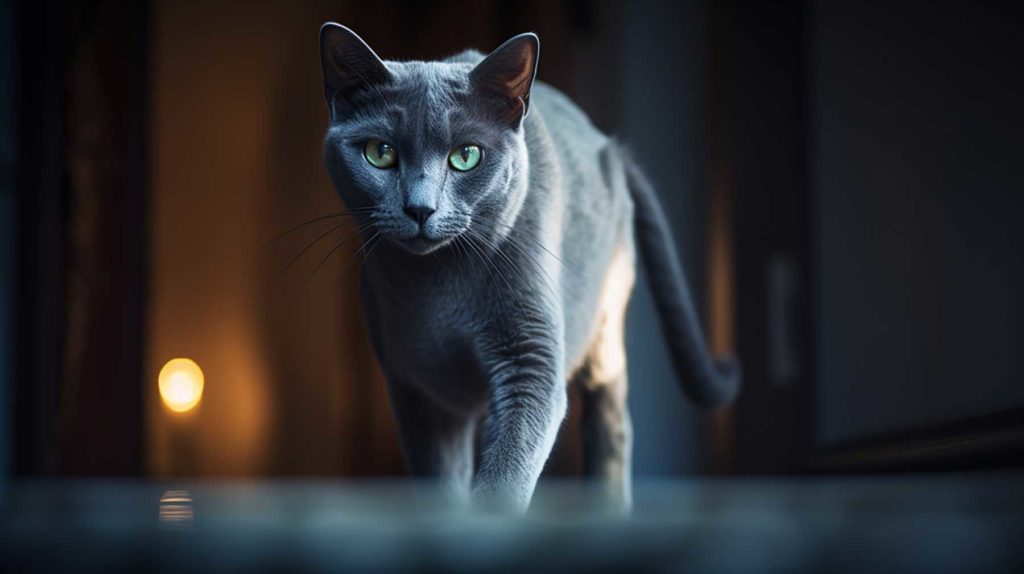
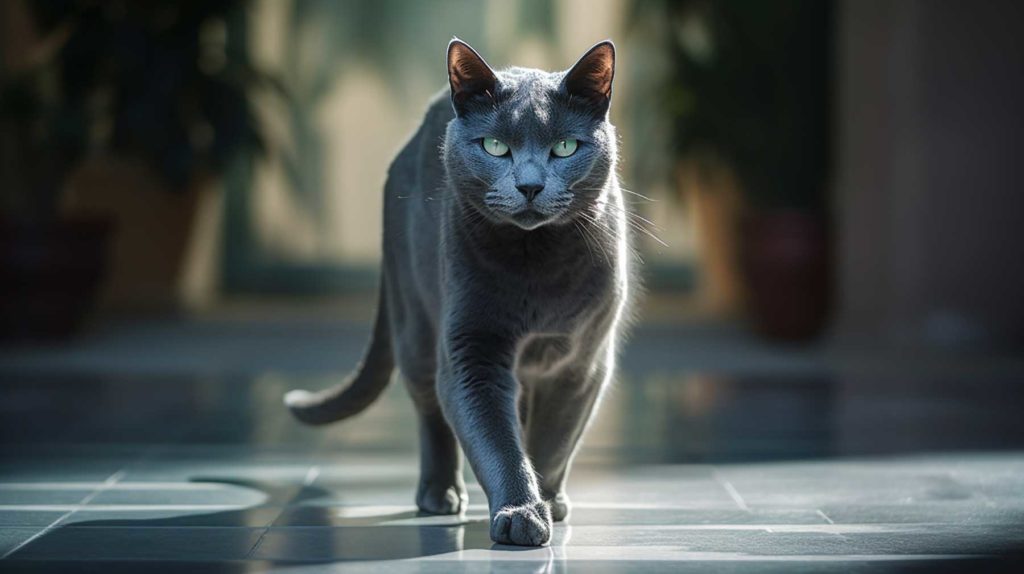
HKM in cats is a thickening of the heart muscle and is most likely genetic, with many breeds besides the Russian Blue being predisposed to it. It is most common frequently in middle-aged cats. Although there is no known cure for this disease, cats can live relatively well for several years if diagnosed early and treated promptly.
FLUTD or Feline Lower Urinary Tract Disease includes any condition that affects the cat’s bladder or urethra. Some cats may experience complete blockage of the urinary tract, making it impossible for them to urinate at all. If your cat makes agonizing noises while trying to urinate, or suddenly becomes unclean, this is a medical emergency, and immediate veterinary treatment is necessary to save your cat’s life. Although bladder disease is not as easily preventable as obesity, you can take steps to reduce the likelihood that your Russian Blue will contract it. Encouraging good drinking habits is crucial. Provide water bowls in quiet areas. Some cats prefer running water, while others will only want to drink still water. Just offer different types to determine which your cat prefers.
Russian Blue cats are said to be particularly fond of eating a lot and tend to be overweight.
Since obesity is a risk factor for many diseases, including diabetes, you should take extra care with this breed to ensure that they don’t eat too much and get enough exercise. In a Swedish study, the breed was identified as one of the high-risk breeds for diabetes mellitus.2 According to another study, the risk of developing cutaneous mast cell tumors is also said to be increased for Russian Blue cats.3
By the way, Russian Blue cats have a very small amount of the protein Fel d1 in them, which is known as an infamous allergen for making life difficult for cat lovers. They are not hypoallergenic because of it, but they are as close as you can get.
Russian Blue diet – fur so fine, appetite divine!
It is important in Russian Blue cats (but in fact in all cats) to ensure that the bladder and kidneys are sufficiently flushed with fluid so that no diseases can develop in the first place. Cats have a limited intake of water through drinking due to their ancestry. In nature, they extract most of their fluid from their prey, which consists largely of liquid. The closest you can come to this natural diet is to give your Russian Blue food that contains as much moisture as possible. Dry food should generally be eliminated from the diet.
To keep the Russian Blue’s natural appetite in check, it helps to give high-quality food that will keep them feeling satiated. For example, Dynasty Emperor Ragout is particularly nutritious, with whole chunks of muscle meat which also provide plenty of tooth abrasion. Thanks to the addition of vitamin A, zinc, biotin, omega fatty acids, and everything else your pet needs, this ragout ensures healthy eyes and a shiny coat for a happy cat life.
Russian Blue character – smart, playful, and secretly shy
The Russian Blue is described as highly intelligent, curious, and friendly. Sometimes she is reserved towards strangers. Apart from occasional meowing, this breed is not particularly talkative. She usually socializes well, whether with other animals or children. She is gentle and quite patient, and tends not to scratch or bite, even when children are a bit rough with her. Like all cats, she loves exciting games and scooting around, but can also be very snuggly. She is also known to love to play tag. Russian Blue can form a deep bond with humans and should get your attention daily as a result.
The Russian Blue also has it in common with most cats to love to climb, watch and run. So you should be able to offer her space accordingly. Since she is not a very large breed, you can help yourself with cat furniture according to your own liking. Thanks to her undercoat, Russian Blue doesn’t get cold easily. She doesn’t need overly warm beds, but she’ll be happy to have a variety of nice places to sleep anyway!
If you plan to leave this cat alone a lot, you should rather get two to allow them social compensation for your absence. A Russian Blue will be happy if you give her the opportunity to go outside and explore the area. Under supervision, because of the danger of theft.
Russian Blue history – from royal courts to seafaring sailors
It is said that Russian Blue cats come from Arkhangelsk (English “Archangel” which is why they are also called Archangel Blue) in northern Russia. This is also supported by their dense fur, which is a good protection in cold weather. There is also a rumor that the Russian Blue was originally kept at the Tsar’s court and among the Russian nobility. These cats were highly valued for their beauty, intelligence, and elegance.
The heavenly Archangel Blue
It is believed, sailors brought the first cats of this breed on their ships to England and Northern Europe around 1860. In England, the Russian Blue took part in one of the first cat shows at the Crystal Palace in 1871, still under the name Archangel Cat. At that time, the stocky British Blues were more popular, so the leaner Russian Blue rarely won. Around 1912, the Russian Blue arrived by unknown means in the USA, where they were recognized as a breed. In Russia, the popularity of these blue pelts is said to have decreased considerably towards 1917 – due to the Russian Revolution.
Moreover, the name Russian Blue was changed to Foreign Blue. They are also called Maltese cats, a name based on their blue color. After the Second World War, they were considered almost extinct. Around 1948 the name was used again. It was also around that time that green eyes became standard – before the Russian Blue had orange eyes.
Suitable for cat beginners with city apartment and full-time work
- Experience level: Beginner
- Housing: Apartment
- Activity level: Medium
- Energy level: Medium
- Trainability: High
- Attachment: Medium
- Friendliness: High
- Playfulness: Medium
- Talkativeness: Low
- Intelligence: High
